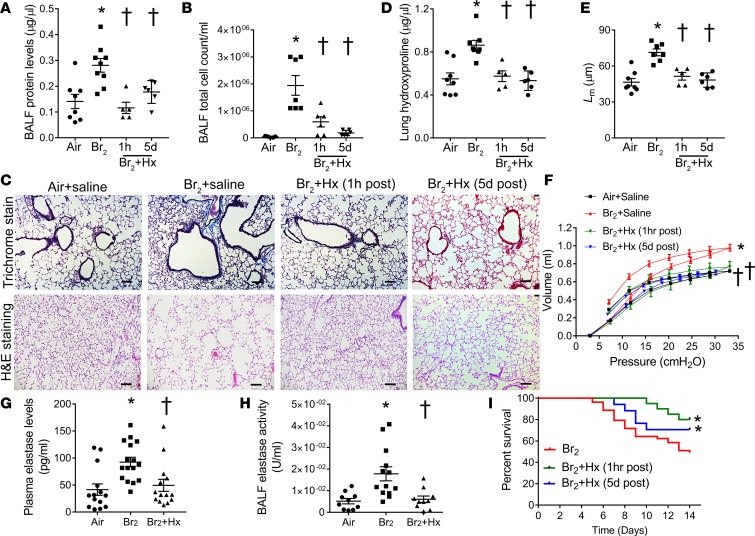Figure 9. Hemopexin attenuates lung injury, airway fibrosis, and lung emphysema.
Male C57BL/6 mice were exposed to air or Br2 gas (400 ppm, 30 minutes) and then returned to room air. Some Br2-exposed mice were given an intraperitoneal injection of purified human hemopexin (Hx) (4 μg/g BW) 1 hour or 5 days after Br2 exposure. All air-exposed mice and some Br2-exposed mice received saline injection as an appropriate control. Fourteen days after Br2 exposure, mouse BALF protein levels (n = 5–9) (A) and total cell count (n = 5–7) (B) were elevated in saline-treated mice but were significantly lower in Hx-treated mice. Hx-treated mice had decreased lung deposition of collagen on Masson’s trichrome staining (n = 5–8) (C) and lower lung hydroxyproline levels (n = 5–8) (D) compared with saline-treated mice, 14 days after Br2 inhalation. Assessment of mouse lung pressure-volume (P-V) curves demonstrated that Br2 exposure increased lung volumes, as indicated by the shifting up and left of PV curve in the saline-treated mice but not in the Hx-treated mice (n = 5–10) (F). Hematoxylin and eosin (H&E) staining of lungs showed that Hx prevented Br2-induced alveolar septa damage (n = 5–8) (C) and reduced alveolar Lm (n = 5–8). Scale bars 100 µm. (E). In addition, Hx lowered plasma elastase levels (n = 14–16) (G) and BALF elastase activity (n = 10–13) (H) in Br2-exposed mice. The Kaplan-Meier curve demonstrated that Hx reduced mortality after Br2 exposure (n = 42 for Br2 + saline; n = 20 for Br2 + Hx [1 hour after]; n = 17 for Br2 + Hx [5 days after]) (I). *P < 0.05 versus air + saline and †P < 0.05 versus Br2 + saline by 1-way ANOVA followed by Tukey’s post hoc test. PV curves were analyzed by 2-way ANOVA with Bonferroni’s post hoc test. Overall survival was analyzed by the Kaplan-Meier method. Differences in survival were tested for statistical significance by the log-rank test.

